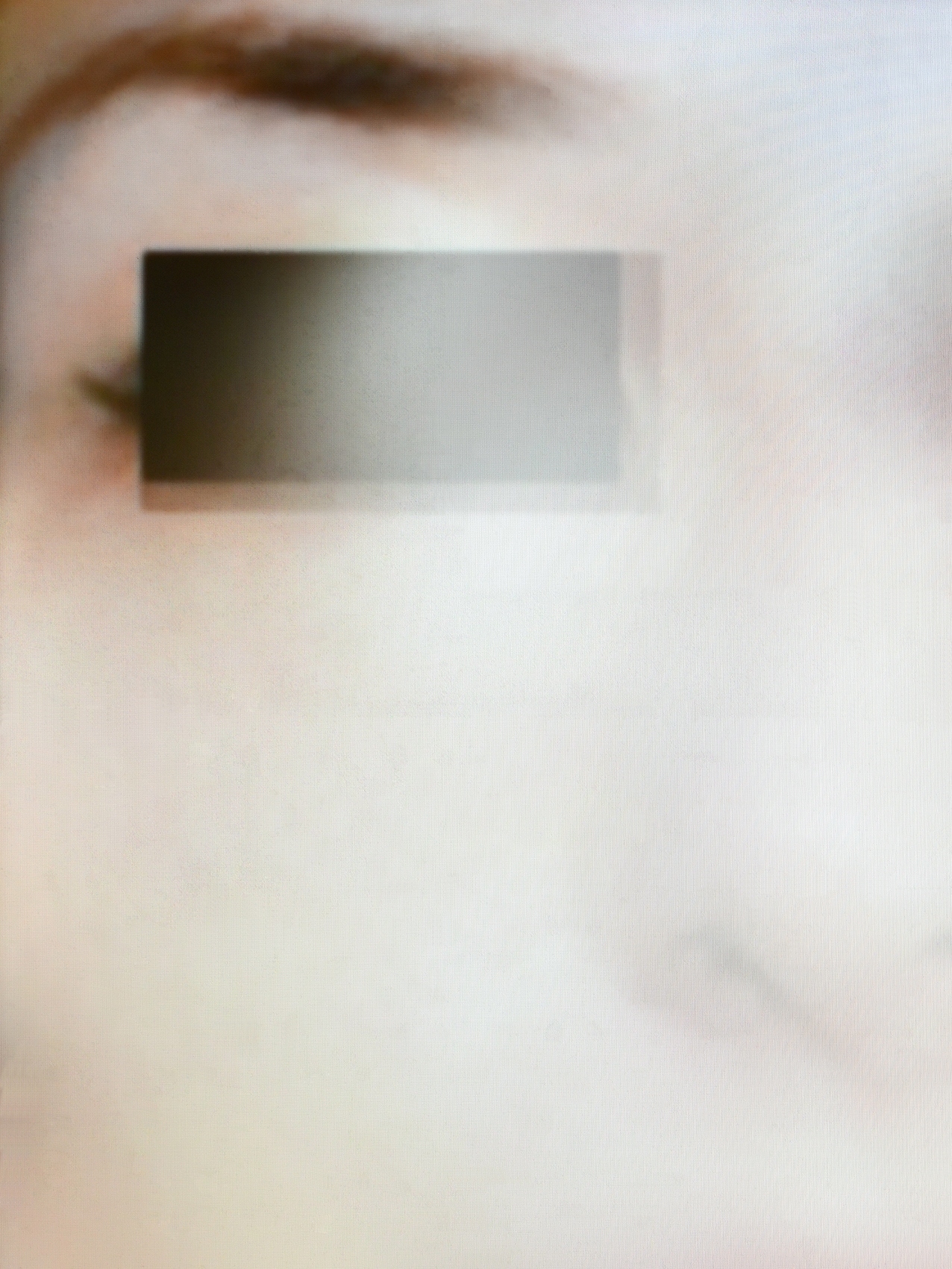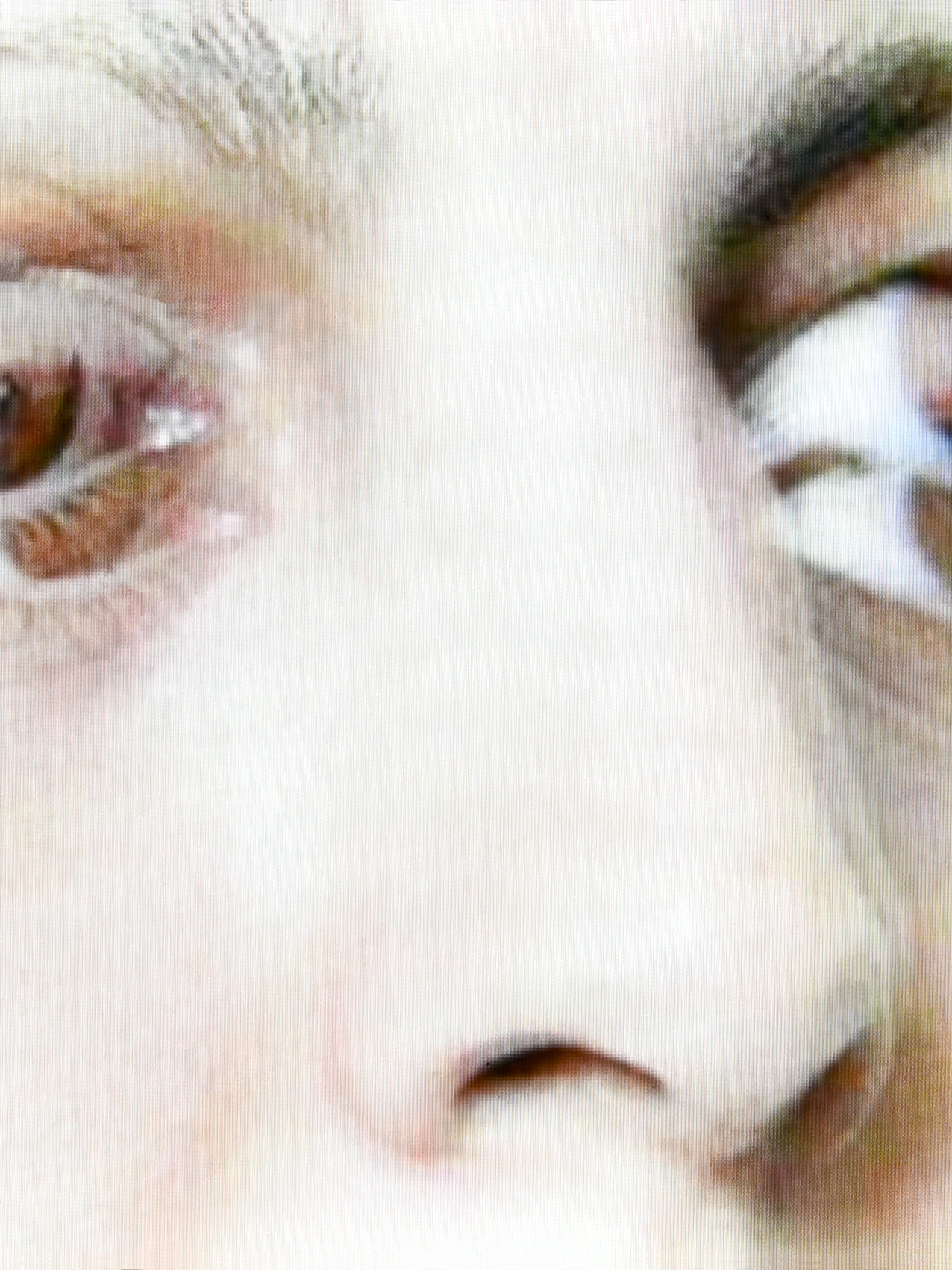Effet miroir | Faire écran
Wishing to question the tangible impact that image has on a certain body mobility and a societal paradigm shift, Faire écran looks at the repercussion of the COVID-19 pandemic on the use of plastic surgery. The increase in video conferencing has led many womxn and men to reshape their faces. On the screens, our faces are anamorphosed, our noses are enlarged; more than the direct gaze of the others, it is the confrontation with this medium which was determining to build the vision that these people had of themselves.
To account for the metamorphosis of the body induced by a societal evolution, patient's pictures were taken before and after the surgical interventions at clinics. Then these images are superimpose on a computer, by scrolling through them slowly they combine themselves into a single image whose transparency and structure are reminiscent of screens and their role in these facial transformations. The flexible and transparent printing medium further emphasizes the malleability of flesh and its links to screens.
Tattooed onto silicone body parts, comments and excerpts from plastic surgery forums, where people considering certain procedures can exchange ideas; printed onto practice skins, different versions of their future faces: These different facial mobilities are based on the philosophical conception of eccentricity borrowed from Helmuth Plessner, in his investigation of the human from its biological and spatial dimension. A surface of reflection and projection, the focus on the body in these eccentric interventions directs attention to new situated forms of subjectivity. This relationship implies a distance to the self and a dynamic of spatialization with a utopian and anthropic dimension.
The series is punctuated by snippets of testimonies, collages of press fragments fixed by strips of scarring.
Wishing to question the tangible impact that image has on a certain body mobility and a societal paradigm shift, Faire écran looks at the repercussion of the COVID-19 pandemic on the use of plastic surgery. The increase in video conferencing has led many womxn and men to reshape their faces. On the screens, our faces are anamorphosed, our noses are enlarged; more than the direct gaze of the others, it is the confrontation with this medium which was determining to build the vision that these people had of themselves.
To account for the metamorphosis of the body induced by a societal evolution, patient's pictures were taken before and after the surgical interventions at clinics. Then these images are superimpose on a computer, by scrolling through them slowly they combine themselves into a single image whose transparency and structure are reminiscent of screens and their role in these facial transformations. The flexible and transparent printing medium further emphasizes the malleability of flesh and its links to screens.
Tattooed onto silicone body parts, comments and excerpts from plastic surgery forums, where people considering certain procedures can exchange ideas; printed onto practice skins, different versions of their future faces: These different facial mobilities are based on the philosophical conception of eccentricity borrowed from Helmuth Plessner, in his investigation of the human from its biological and spatial dimension. A surface of reflection and projection, the focus on the body in these eccentric interventions directs attention to new situated forms of subjectivity. This relationship implies a distance to the self and a dynamic of spatialization with a utopian and anthropic dimension.
The series is punctuated by snippets of testimonies, collages of press fragments fixed by strips of scarring.
Exhibitions
Centre de la Photographie, Genève
Nuit des images x near. Photo Elysée
Bourses de la Ville de Genève BLCG, Centre d’art contemporain, Genève, CH — Opening 05.09.2023
KIEFER HABLITZEL | GÖHNER KUNSTPREIS. SWISS ART AWARDS, Halle 3 Messe, Basel, CH — Opening 12.06.2023
Le premier volet de ce projet a été développé dans le cadre de l’enquête photographique genevoise, sous la thématique de la mobilité.
Centre de la Photographie, Genève
Nuit des images x near. Photo Elysée
Bourses de la Ville de Genève BLCG, Centre d’art contemporain, Genève, CH — Opening 05.09.2023
KIEFER HABLITZEL | GÖHNER KUNSTPREIS. SWISS ART AWARDS, Halle 3 Messe, Basel, CH — Opening 12.06.2023
Le premier volet de ce projet a été développé dans le cadre de l’enquête photographique genevoise, sous la thématique de la mobilité.


































